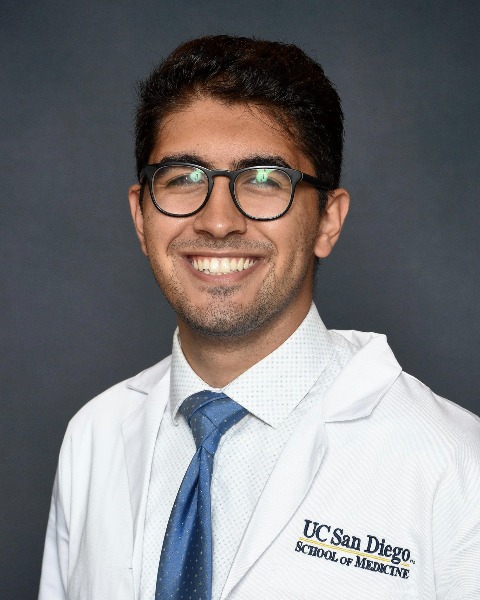Trauma
Prone Lateral Corpectomy with Short Segment Posterior Spinal Fusion for Lumbar Burst Fracture: Report of Two Cases
Friday, February 21, 2025

Kareem Khalifeh, BS
Medical Student
UCSD School of Medicine
UC San Diego School of Medicine
Presenting Author(s)
Disclosure(s):
Kareem Khalifeh, BS: No financial relationships to disclose
Introduction: The lateral transpoas approach has become an increasingly utilized technique in the treatment of thoracolumbar spine pathologies. Recent studies report a modified single-position prone lateral transpsoas surgery which incorporates lumbar interbody fusion and pedicle screw fixation. However, scant literature exists demonstrating its utility in corpectomy cases. This report aims to highlight the technique, efficacy, and implications associated with single-position prone lateral transpsoas corpectomy with short segment posterior spinal fusion in two traumatic cases with unstable burst fractures.
Methods: Patient demographics as well as clinical and radiographic outcomes were reviewed retrospectively. Written informed consent was obtained for all patients involved in this study.
Results: The first patient, a 29-year-old male, presented with severe back and right lower extremity pain after falling from a roof. Imaging revealed an L4 burst fracture with canal compromise and a ventral epidural hematoma. He underwent a single-stage prone lateral L4 corpectomy with open short-segment L3-L5 decompression and fusion with complete resolution of symptoms durable at six months follow-up. The second patient, a 60-year-old male, presented with severe back pain and right lower extremity proximal weakness with radiating leg pain status post a motor vehicle accident. Imaging revealed an L3 burst fracture with canal compromise. The patient underwent a single-stage prone lateral L3 corpectomy with open short-segment L3-L5 decompression and fusion with immediate improvement in pain and weakness. At four months follow-up, he continued to endorse resolution of pain but weakness in his quadriceps persisted.
Conclusion : Initial reports regarding this novel approach demonstrate promising results in terms of safety and efficacy when compared to traditional techniques. Nevertheless, further studies using expanded cohorts with various underlying pathologies are warranted.

.jpg)